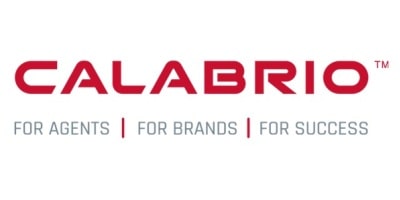These steps are key to contact centre agility for any season – Magnus Geverts, VP Product Marketing at Calabrio discusses
Contact centres experience many peaks and troughs in demand throughout the year. Some of these are easily predicted – Black Friday and Christmas peaks, for example, or a fall in demand over the summer months – but others happen more unexpectedly.
The good news is that by planning ahead and using predictive analytics to understand what to expect, contact centres can maintain service levels throughout the year. Here are four crucial steps that will ensure your contact centre is prepared for any fluctuations in demand, no matter the season.
Step 1 – Forecast demand
Forecasting is essential for identifying forthcoming changes in demand that may not be a staple in the calendar, such as Christmas. By harnessing advanced analytics and predictive modelling techniques, you can evaluate historic data and market trends to determine with greater accuracy the projected workloads you will need to support.
For maximum accuracy, this forecasting process should consider any upcoming promotions and include up-to-the moment projections on inventory levels and production schedules. This will help allocate resources efficiently and verify that the right number of agents, with the right skills, are available during peak periods.
Even better, consider implementing real-time monitoring systems that will enhance your ability to respond to unexpected changes and manage any customer-related fluctuations in demand. Using these insights, you can adjust staffing levels accordingly and avoid any unexpected manpower resourcing surprises.
Step 2 – Initiate flexible scheduling
Flexible scheduling is a win-win strategy for everyone. By allowing agents to choose shifts based on their availability and preferences, your contact centre can maintain a motivated and highly engaged workforce that performs optimally, even during stressful seasons of high demand.
Today’s leading workforce management (WFM) systems feature self-scheduling solutions that allow agents to build and modify their own schedules in real-time and on the move, using their mobile devices. It covers everything from planning lunch breaks, taking time out to handle family and domestic demands, or reserving time to undertake learning and development training.
Flexible scheduling is a cooperative approach that empowers agents to achieve the work-life balance central to maintaining their wellbeing without impacting the contact centre’s service levels. For maximum efficiency, any agent-driven changes are automatically managed within the service levels and customised rules you have set.
With flexible self-scheduling in play, agents become part of the solution and can get involved in self-regulating to cover staffing gaps. Agents are able to access their colleagues’ schedules, swap shifts and coordinate lunch breaks without any team leader or administrator intervention.
All of this elevates workplace collaboration while supporting rapid adaptation to fast changing demands.
Step 3 – Optimise staff holiday planning
To understand how many agents you will have on hand, it is essential to ensure that holiday entitlements are transparently managed and staff are encouraged to make arrangements as early as possible, especially during the summer months.
Doing so will allow agents to schedule annual leaves without compromising operational continuity.
To make life easier for agents, utilise a workforce management system that incorporates an automatic holiday approval feature. By instantly approving requests that meet certain criteria, impartiality and transparency are guaranteed while freeing up management to focus time and effort on more strategic activities.
Step 4 – Go virtual with remote and hybrid working
By allowing staff to work remotely, you will be able to rapidly adjust your agent workforce to cope with fluctuating demands and go beyond the constraints imposed by physical office locations to tap into the widest possible geographic talent pool.
Alongside enabling existing teams to stay productive while handling domestic responsibilities such as childcare, remote working enables temporary customer service staff and part timers to roster shifts that work best for them whilst providing extra support during busy periods.
To optimise performance, maintain compliance, protect customer data, and assure agents are appropriately supported, you will need to consider everything from connectivity and security through to agent communication, coaching, call/screen live monitoring, real-time reporting and more. Ideally, agents should also be able to utilise the same self-scheduling and shift management capabilities that on-site teams benefit from.
Year-round success
By planning ahead and taking steps to initiate smart workforce platforms that enable everyone to collaborate effectively, you can balance service delivery to demand, maintain a customer-centric focus, and keep agents happy and productive. All of which will ensure that your contact centre is delivering top-notch service whatever the season.

For additional information on Calabrio view their Company Profile






